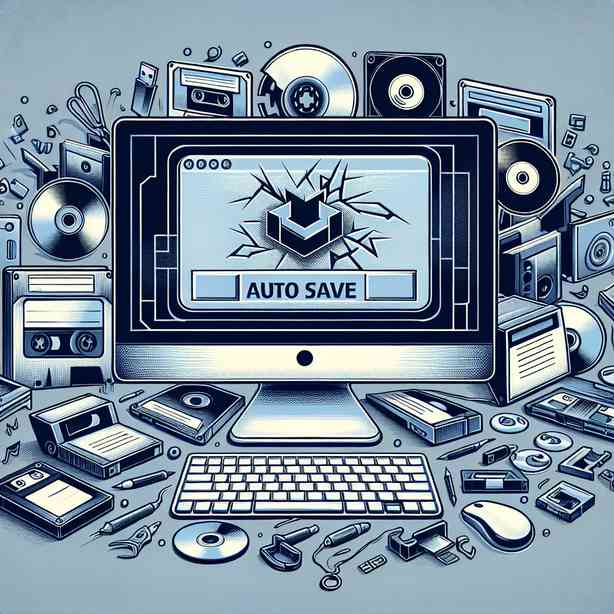
In the modern digital landscape, the expectation for seamless technology interaction has grown exponentially. Among the many features that have become staples in our daily activities, “auto save” has emerged as a popular tool across various applications and platforms. While it is designed to alleviate the anxiety of losing work due to sudden interruptions, personal experiences have led many users to question its reliability. As we delve into the reasons behind this growing skepticism around auto save, it is crucial to understand its mechanics, the potential pitfalls, and alternative strategies that ensure a more secure digital experience.
At its core, the auto save function is intended to automatically record changes made to a document or project at predetermined intervals. This feature allows users to focus on their work without the looming fear of data loss, especially during power outages, crashes, or unplanned application closures. However, the perception of security that comes with auto save can be misleading. Users often assume that as long as the feature is activated, their work is continuously backed up. This belief can lead to complacency, ultimately fostering a false sense of security that may cause more harm than good.
One significant issue with auto save is its dependency on the application’s design and functionality. Not all applications implement auto save in the same manner, and the variability in performance can result in inconsistencies. For instance, some applications may only save at certain intervals, missing critical changes if a user forgets to save manually before an unexpected crash. Additionally, when trying to navigate back to previous versions of documents, the auto save function may inadvertently overwrite previous states that users might wish to revert to, leading to further complications.
Moreover, technical glitches and bugs in the software can compromise the effectiveness of auto save. Errors, such as slow network connections or server issues, can interrupt the save process, leading to potential loss of unsaved work. Users may not always be aware of these errors until it is too late, resulting in frustration and distrust in the tool they once relied upon. This skepticism is further amplified when users hear anecdotes of important work being lost, which are not uncommon in the digital world.
In addition to technical limitations, another aspect contributing to the loss of trust in auto save is the lack of user control over the saving process. Many applications do not provide adequate notifications or visual cues indicating the success of an auto save, leaving users uninformed of the status of their work. This ambiguity can lead to uncertainty and a feeling of helplessness, particularly in high-stakes situations where even a momentary lapse in saving could have significant repercussions.
The human element also plays a critical role. As technology evolves, so do users’ expectations. Many individuals have either faced negative experiences with auto save or have heard stories from others who have. This shared knowledge creates a culture of skepticism, where users start doubting not only the auto save feature itself but also the trustworthiness of digital tools altogether. The emotional weight of losing hours of work can foster a deep-seated mistrust that extends beyond one single application.
To mitigate these concerns and rebuild trust in the auto save feature, it is essential for development teams to prioritize transparent communication. This involves clear indications of successful saves, easy-to-access version histories, and intuitive user interfaces that empower users to manage their own save settings. As technology becomes more integrated into our lives, the importance of user-centered design cannot be overstated. Enhancements geared towards providing users with a sense of control can go a long way in erasing doubts about auto save.
In light of these challenges, individuals may consider adopting additional strategies for safeguarding their work. Establishing a consistent habit of manual saving alongside relying on auto save can serve as a fail-safe measure against unexpected data loss. Scheduling reminders to save periodically or customizing auto save settings within applications, when possible, can provide both security and assurance. Moreover, backing up work to external storage solutions or utilizing cloud services can safeguard documents even further, creating layers of security that enhance user confidence.
It’s essential to remember that technology, while incredibly beneficial, is not infallible. Users should approach digital tools with a balance of trust and caution, understanding their limitations while also recognizing their advantages. By acknowledging the potential drawbacks of relying solely on auto save and implementing supplemental strategies, individuals can create a more resilient digital workflow that promotes efficiency without sacrificing security.
Auto save is a powerful tool in today’s fast-paced digital environment, but it is not without its drawbacks and limitations. From technical glitches to a lack of user control, there are several factors that contribute to the skepticism surrounding this feature. By recognizing these challenges and taking proactive steps to enhance personal workflows, users can regain a sense of control and security in their digital interactions. Ultimately, fostering a balanced relationship with technology allows us to take full advantage of its numerous benefits while guarding against the uncertainties that come with it.
As we navigate through this digital age, we must remain vigilant and informed, advocating for improvements in technology that prioritize usability and reliability. The partnership between users and developers is pivotal in shaping a more trustworthy and efficient digital experience. By voicing concerns and pushing for enhancements, we can collectively work towards creating a digital landscape where auto save and similar features regain the trust they deserve, enhancing our productivity and creativity.
In conclusion, while the auto save feature was created to simplify our lives, various factors have led to a decline in trust among users. By understanding its limitations and implementing additional strategies, we can create a more secure and reliable workflow. Acknowledge the power of technology, but also recognize its potential pitfalls; this balance is vital in today’s fast-evolving digital world.


